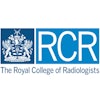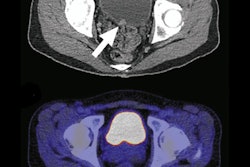
The U.K. Royal College of Radiologists (RCR) has updated its standards for any healthcare professional providing a report on an imaging investigation. The document defines best practice and emphasizes the importance of actionable reporting, teamworking, close communication, peer feedback, learning, and system improvement, according to RCR President Dr. Nicola Strickland.
The 17-page report can be downloaded for free and is aimed at radiologists and other reporters, fellow clinicians, employing bodies and private employers, regulators, and training and quality improvement bodies.
 RCR President Dr. Nicola Strickland.
RCR President Dr. Nicola Strickland."Alongside advice on the essential steps in producing an imaging report, there is also guidance on teleradiology, home reporting, and artificial-intelligence assisted reporting," she noted in a foreword. "The section on quality assurance and governance covers emergency reporting, reporting investigations referred from generalists, and the responsibilities of reporters and employers."
A radiology report must take into account the patient's past history, previous imaging, current symptoms and signs, and the results of other diagnostic tests. It should also accurately describe the imaging findings, give a diagnosis or stratified list of differential diagnoses, and offer suggestions for further appropriate imaging, other investigations, or patient management, Strickland wrote.
"They (patients) want it to be provided in a timely manner for reassurance, confirmation of diagnosis or identification of unexpected findings, and for that report to be communicated to the referrer and/or appropriate multidisciplinary team with the degree of urgency, including failsafe mechanisms, related to the significance of the radiological findings or the urgency of the clinical scenario," she wrote, adding that radiologists must take clinical responsibility, providing a medical opinion on that imaging.
Key points in the report
The following is a summary of the main standards outlined in the document:
- A radiology report should be actionable and prompt appropriate care for the patient. It should answer the clinical question and include a tentative or differential diagnosis when an abnormality is seen and relevant negative observations if pertinent.
- The wording of the report should be unambiguous and should take into account the professional background of the referrer. Further investigations or specialist referral should be suggested within the report when they contribute to patient management.
- The reporter should take into account and review pertinent prior studies from the same and different imaging modalities, all the relevant clinical information, laboratory results, and histopathology reports.
- Where there is a need for a long, descriptive report, it should conclude with a short summary of key findings and their interpretation (with appropriate clinical advice on the next step of management, if appropriate).
- All reporters of imaging studies should use the hospital's RIS/PACS to document their reports formally, and the reports should be visible on the electronic patient record.
- When there are imaging findings that constitute a medical emergency or a significant unexpected finding, reporters should comply with local mechanisms to alert referrers.
- Reporters should supplement their written report with verbal dialogue when appropriate. There should be a reliable way for a referring clinician to discuss difficult cases in more detail with the individual who reports the investigation.
- Reporters should formally record ad hoc reviews and second opinions as supplementary reports (or addenda), and should draw this to the attention of the referrer if the interpretation of the imaging study is thereby significantly changed so that patient management decisions are based on the most up-to-date opinion.
- Systematic feedback from the referring clinicians should form part of the individual professional's clinical practice (for example, multidisciplinary team meetings [MDTMs]). This systematic feedback should be defined in the reporter's scope of practice.
- All reporters of imaging studies should be fully integrated into systems of quality assurance in reporting, for example, through participating in learning from discrepancy meetings and receiving frequent feedback on their reports (e.g., peer feedback and MDTMs).
- For patients to have confidence in the service, objective standards are required for all reporters. This should include a nationally calibrated exam and curriculum, followed by formal continuing professional development, annual appraisal, and five-yearly revalidation (or equivalent).
- In the interest of patients, all reporters should be registered and have a license to practice (or equivalent) with the appropriate regulatory authority.
- The professional status and regulatory registration details of the reporter should be clear on all written reports.
- The individual signing the report is accountable and takes responsibility for the content of that report.
- Teamworking is important for all reporters. When image interpretation and reporting is delegated to nonmedically qualified reporters, they should work in teams with ready access to medically qualified reporters (generally radiologists) for medical advice and second opinions. Radiologists, and other reporting doctors, should have access to a second opinion from a radiologist at the time of reporting, or soon afterwards, if required.
- Radiologist and nonradiologist reporters should only work within their scope of practice and competence.
The RCR published the original version of the document in 2006, and then produced updates in 2009, 2012, and 2014. Dr. Neelam Dugar, consultant radiologist at Doncaster Royal Infirmary and a member of the editorial advisory board of AuntMinnieEurope.com, was the principal author of the 2018 edition. She was helped by other members of the Clinical Radiology Professional Support and Standards Board, and Dr. Andrew Smethurst was the principal editor.
For more details on the RCR document and to download a copy, click here.



















